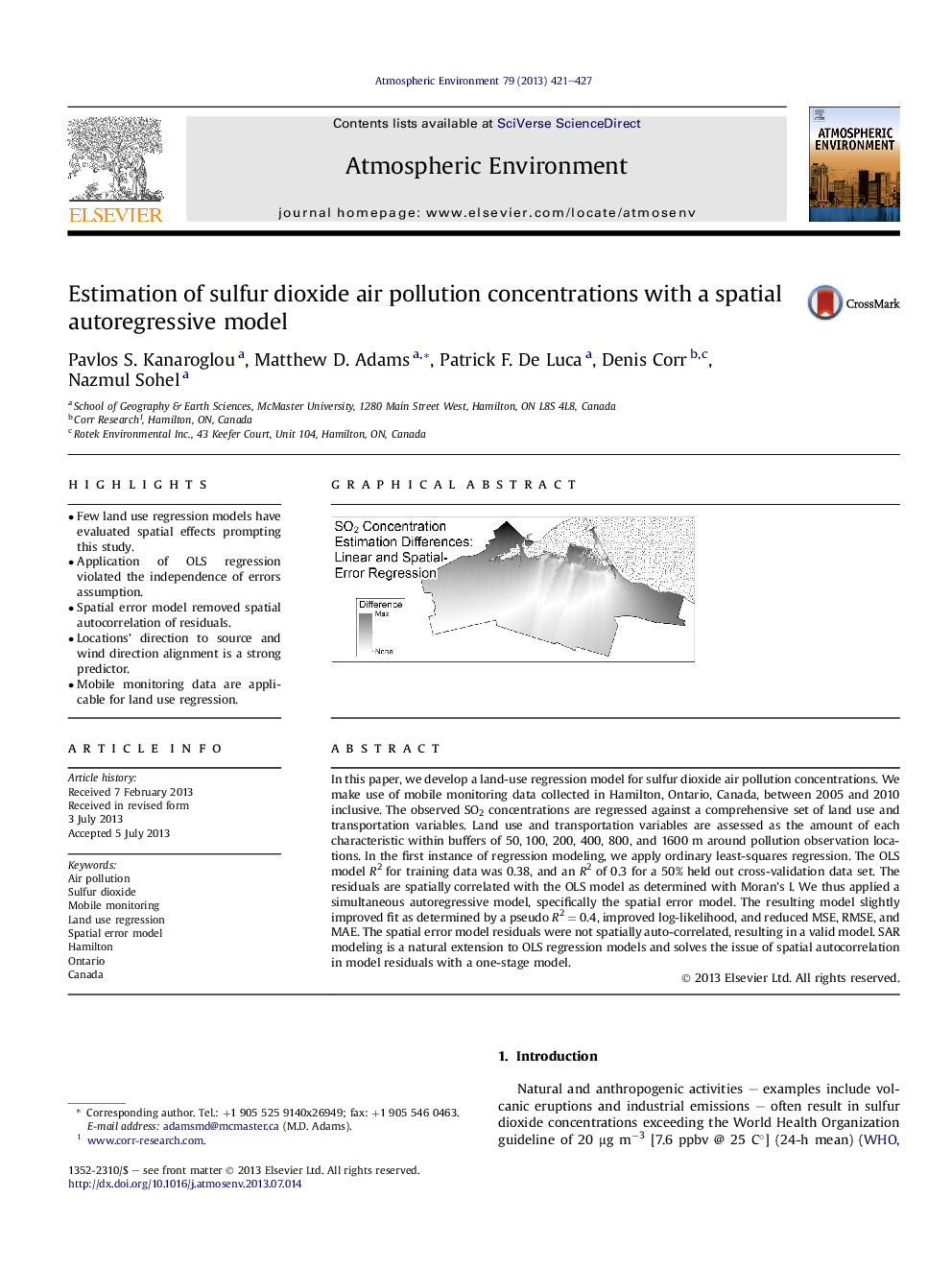| Article ID | Journal | Published Year | Pages | File Type |
|---|---|---|---|---|
| 6341493 | Atmospheric Environment | 2013 | 7 Pages |
â¢Few land use regression models have evaluated spatial effects prompting this study.â¢Application of OLS regression violated the independence of errors assumption.â¢Spatial error model removed spatial autocorrelation of residuals.â¢Locations' direction to source and wind direction alignment is a strong predictor.â¢Mobile monitoring data are applicable for land use regression.
In this paper, we develop a land-use regression model for sulfur dioxide air pollution concentrations. We make use of mobile monitoring data collected in Hamilton, Ontario, Canada, between 2005 and 2010 inclusive. The observed SO2 concentrations are regressed against a comprehensive set of land use and transportation variables. Land use and transportation variables are assessed as the amount of each characteristic within buffers of 50, 100, 200, 400, 800, and 1600Â m around pollution observation locations. In the first instance of regression modeling, we apply ordinary least-squares regression. The OLS model R2 for training data was 0.38, and an R2 of 0.3 for a 50% held out cross-validation data set. The residuals are spatially correlated with the OLS model as determined with Moran's I. We thus applied a simultaneous autoregressive model, specifically the spatial error model. The resulting model slightly improved fit as determined by a pseudo R2Â =Â 0.4, improved log-likelihood, and reduced MSE, RMSE, and MAE. The spatial error model residuals were not spatially auto-correlated, resulting in a valid model. SAR modeling is a natural extension to OLS regression models and solves the issue of spatial autocorrelation in model residuals with a one-stage model.
Graphical abstractDownload high-res image (305KB)Download full-size image
